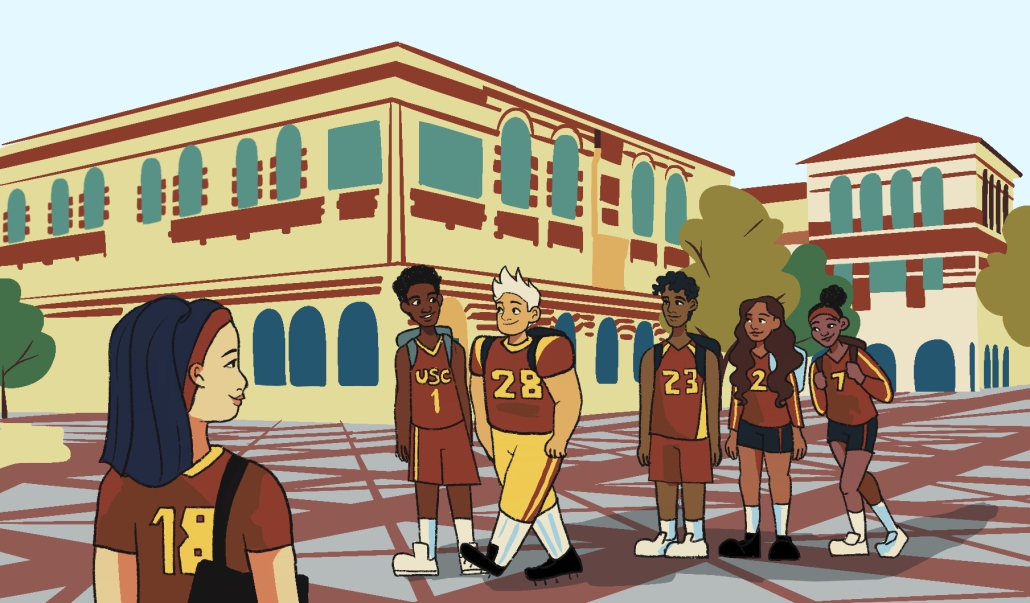Student athletes return to jam-packed schedules

With classes beginning yesterday, it’s again time to memorize your schedule, locate any buildings you’ve never heard of and, I’m sorry to say it, get ready to do some homework.
It’s also time for USC’s busy fall athletic calendar to begin — in fact, it already has. The soccer team is already two games into their season. Volleyball plays their season opener on Friday. Football, cross country and men’s water polo open their seasons next weekend.
USC will field 21 Division 1 athletic teams this school year as the 629 student athletes at USC navigate their athletic, academic and extracurricular commitments.
A typical weekday for a USC football player consists of weightlifting in the mornings followed by a day of classes, tutoring sessions and studying. In the evenings the team practices, reviews game film and has team meetings. Their schedule becomes even more packed once teams start traveling to away games.
When asked about the first day of classes, redshirt senior lineman Brett Neilon let out a big sigh and said, “To be honest I’ve been here a long time, doing a lot of classes, so I’m not too excited but you know what? I have two [classes] left to get my master’s degree so I’m excited about that.”
Neilon is studying for his master’s degree in entrepreneurship and innovation.
USC’s future departure to the Big Ten and its embrace of name, image and likeness deals caused many people, such as Pac-12 commissioner George Kliavkoff, to question the University’s commitment to the education of its athletes.
“It’s clear that UCLA and USC made a decision for short-term financial gain at the expense of their student-athletes,” Kliavkoff said in an interview with the Athletic.
University of California leadership is attempting to prevent UCLA’s move to the Big Ten in part because of the large increase in time commitment for athletes. USC, being a private institution, is free from any UC control.
USC emphasized the importance of education in their initial Big Ten announcement, even as the average USC athlete’s schedule is set to become much busier with the increased time spent traveling across the country.
“The enhanced resources from this move will enable additional support for our student-athletes as well as benefit initiatives surrounding academics, accessibility and affordability,” said President Carol Folt in the University’s initial announcement of the groundbreaking move. “We are committed to devoting the necessary resources to ensure our student-athletes can continue to thrive in their coursework with minimal travel disruption.”
Despite the headache that planning a USC athlete’s schedule could become, there is little question on how dedicated athletes are to their craft and whatever it takes to stay on the playing field or in the classroom.
“Every day, whatever’s expected of me, I’m going to be there, whether it’s for classes or football.” redshirt sophomore lineman Courtland Ford said.
For some athletes, the resources provided by the University help ease the process.
“I think with water polo we organize it pretty well,” said water polo captain Chris Sturtevant in an interview with the Daily Trojan. “All of our freshmen have mandatory tutors and if varsity athletes want we can talk to our athletic advisor and she’ll give us whatever tutor we want for the class.”
Cole Gabrielson, an outfielder for the baseball team, said that the busy schedules are just a part of being a college athlete.
“It’s hard work but it’s what you signed up for when you decided to come play college athletics,” Gabrielson said. “Obviously the early mornings into a long day with practice late into the night can get tiring but that’s the separator right there of good teams and bad teams.

